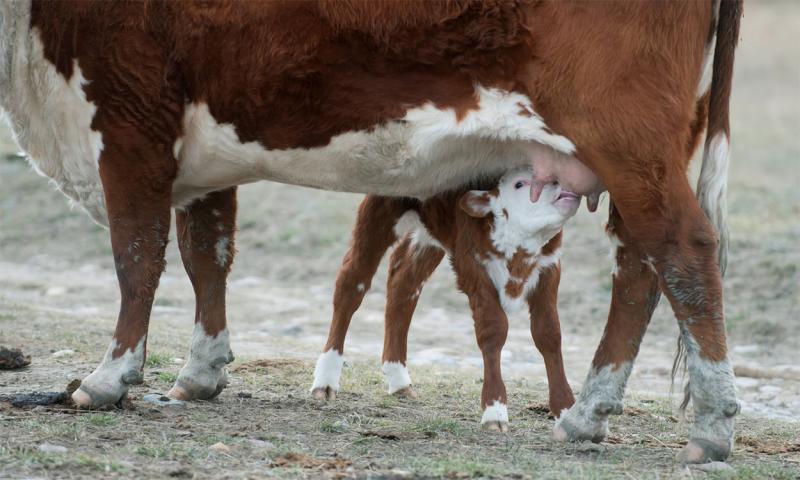
Dairy and beef producers have long understood the importance of colostrum for the short- and long-term health of their calves. Dairy producers manage colostrum delivery more intensively than most beef producers, but the same factors come into play regardless of whether people directly feed colostrum to calves (such as on dairies) or employ a more hands-off approach. These crucial factors include quantity and quality of colostrum, as well as timeliness of consumption.
Cattle producers do not have to guess whether those three critical factors are sufficiently meeting the needs of the calf. It’s possible to assess colostrum for antibody concentration prior to its being fed but assessing antibody levels in the calf after they consume colostrum is more comprehensive and is usually the best first step in determining whether any problems exist.
For this, a blood sample is taken from calves between 1 and 7 days-old. This age range represents calves with sufficient time to absorb colostrum and haven’t yet begun catabolizing or manufacturing antibiotics by themselves. The major type of antibody transferred in colostrum, IgG, can be measured in the blood sample at a laboratory.
A simple measurement of the protein level in a serum sample is a very good substitute for IgG levels, however. This measurement can be done on the farm or in a vet clinic with a refractometer, giving immediate and inexpensive results.
Calf health experts have determined the minimum level of serum protein to categorize a calf as having received sufficient colostrum. This point has been historically set at 5.2 g/dl of serum protein. Calves with lower serum protein levels are considered to have failure of passive transfer.
This cutoff point was established in light of extensive research comparing serum protein levels with calf death and disease records. The 5.2 g/dl standard has served dairy and beef producers well as a guideline but has less utility as a prognostic indicator. Because calf diseases such as scours and pneumonia are multifactorial, a calf above the serum protein cutoff is not necessarily guaranteed good health. Similarly, a calf with low serum protein is not necessarily doomed to disease and early death. The measure, therefore, is best applied to groups of calves to generally indicate how well colostrum transfer is occurring in the herd.
As more research and experience using the 5.2 g/dl cutoff accumulated, it’s become apparent that adjustments were in order. Most notably, experts found that calves with serum proteins significantly higher than the cutoff fared better health-wise than calves just over the line. Additionally, dairy and beef producers have been doing a better job of colostrum delivery and management than they were at the time the guideline was created. This makes the 5.2 g/dl cutoff a relatively low bar to clear.
Recently, updated recommendations for colostrum monitoring have been published (Lombard, et al, 2020). Instead of just one cutoff, the new guidelines are broken into 4 different levels (Table 1). Operators should work towards 40% of their calves falling into the “excellent” category and less than 10% in the “poor” group.
| Category |
|
category per herd |
|---|---|---|
| Excellent |
|
|
| Good |
|
|
| Fair |
|
|
| Poor |
|
|
While the guidelines were developed with dairy calf data, they likely are very applicable to beef herds as well. For example, a beef herd we recently worked with had average serum protein of 6.3 g/dl in a group of studied newborn beef calves, indicating these goals are attainable in beef herds, too.
Not every operation will benefit from monitoring passive transfer of antibodies in this manner, but herds experiencing excessive illness or death loss in young calves should monitor herd colostrum consumption using these guidelines. If a colostrum problem is identified, steps can be taken with the herd’s veterinarian to further investigate the factors associated with the calves’ poor transfer of colostral antibodies.
Reference:
Lombard J., Urie N., Garry F., et. al. (2020). Consensus recommendations on calf- and herd-level passive immunity in dairy calves in the United States. J Dairy Sci 103:7611-7624.


